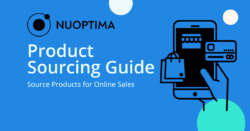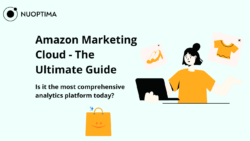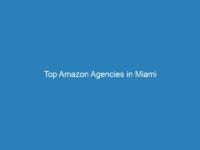Welcome to the intricate world of Amazon PPC (Pay-Per-Click) advertising! If you’re a seller on this platform, you’ve probably heard of PPC, a vital cog in the complex machinery that is Amazon’s e-commerce ecosystem. Understanding Amazon PPC cost isn’t just an academic exercise; it’s necessary for anyone keen to turn those clicks into ringing tills.
Why, you ask? The significance for sellers can’t be overstated. Think of it as a high-stakes auction house where you’re constantly outbidding competitors for the top advertising spots. But, like any auction, the game involves risks and challenges, from fluctuating prices to decoding the right strategy. As a merchant, understanding Amazon PPC advertising cost can be the difference between thriving in a competitive marketplace and struggling to stay afloat.
Ready to dive in? Keep reading to grasp the fundamentals of ad spend, its evolution, and tips on how to reduce Amazon PPC costs.
What You Need to Know About Amazon PPC Costs
In the ever-changing e-commerce landscape, knowing how Amazon PPC costs have evolved can give you a strategic edge. Managing spend is a central part of the Amazon PPC services we offer at NUOPTIMA, and we feel it’s important all sellers grasp the basics. Just like you wouldn’t set sail without a compass, you wouldn’t want to start your campaign without understanding the expenses involved.
What Amazon PPC Costs Should You Be Aware Of?
When managing an Amazon PPC campaign, there are several costs you should be aware of to budget effectively and maximise return on investment. These include:
| Metric | Description |
| Cost-Per-Click (CPC) | Essentially, this is what you pay each time someone clicks on your ad. Simple as that. |
| Cost-Per-Impression / Cost-Per-Mille (CPM) | With this, you’re charged per 1,000 impressions, irrespective of clicks. This is more common for brand awareness campaigns. |
| Advertising Cost of Sale (ACoS) | This metric combines your total ad spend in relation to the sales generated from those ads. It’s the percentage of your revenue consumed by your advertising efforts. |
| Total Advertising Cost of Sale (TACOS) | This is a more comprehensive metric that looks at your advertising cost as a share of your total revenue, not just the revenue generated by your ads. |
| Cost-Per-Acquisition (CPA) | This considers the total cost to acquire a customer, which might include other marketing efforts beyond PPC. |
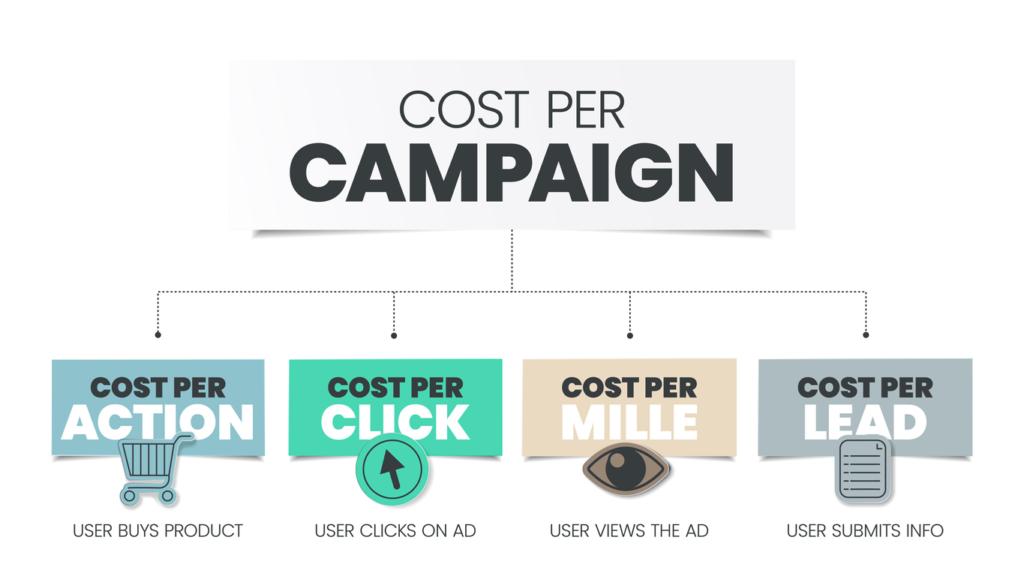
Amazon PPC Costs: Past and Present
The numbers don’t lie, folks! The cost of Amazon PPC advertising has been on a steady climb. For instance:
- The average CPC has rocketed to $1.20 per click, a staggering 30% increase from the start of 2021. In comparison, it was just $0.85 in 2020.
- While expenditure seemed to stabilise in 2022, the data shows that the average CPC has already risen to $1.35 in 2023.
- Additionally, the rise in average ACoS from 22% in 2020 to over 30% indicates that advertisers are spending more to make a sale.
In terms of where this ad budget is going, Sponsored Products still reign supreme. However, there’s a noticeable swing towards Sponsored Brands and Sponsored Display ads. These trends suggest that sellers are realising the importance of brand equity along with product visibility.
What Factors Affect Amazon PPC Cost?
There are numerous reasons that advertising expenditure may fluctuate, a few of which we’ve outlined below.
Competition
In the bustling marketplace, competition is fierce. The more vendors bidding on the same keywords, the higher the Amazon PPC cost. However, it’s not just about the number of competitors but also their financial muscle. Large players can afford higher bids, thus inflating the spend for everyone else. Monitoring your competition and understanding their tactics can help you plan better.
Bidding Strategy
Your choice between manual and automated bidding can significantly impact how much you spend. With manual bidding, you have more control, but it requires time and expertise to fine-tune. On the other hand, automated campaigns can adjust your bid in real-time based on the likelihood of converting but may sometimes result in higher CPC. Finally, a hybrid approach, utilising both manual and automated, is often the most effective.
Relevance to Keyword
The algorithm will reward an ad that closely matches the user intent. Thus, high relevance doesn’t just improve your ad rank but also lowers your CPC. If you optimise your product listing and ad with high-relevance keywords, you could pay less per click.
Click-Through-Rate (CTR): A high CTR usually indicates an ad that resonates with consumers. The marketplace will see this as a positive user experience and tends to reward you with a lower CPC. Improving your CTR isn’t just about the ad copy or images but also about targeting the right audience.
Conversion Rate: If your ad is attracting clicks and converting those into sales, Amazon is likely to favour you in the ad rank equation. A high conversion rate generally implies that customers find your offering valuable, thereby improving your ACoS.
Listing SEO and Content: A well-optimised listing isn’t just good for organic search; it can also significantly benefit your campaigns. Quality content that clearly describes your product and addresses common customer queries can boost conversions and help you win the Amazon choice badge, potentially reducing your ad spend.
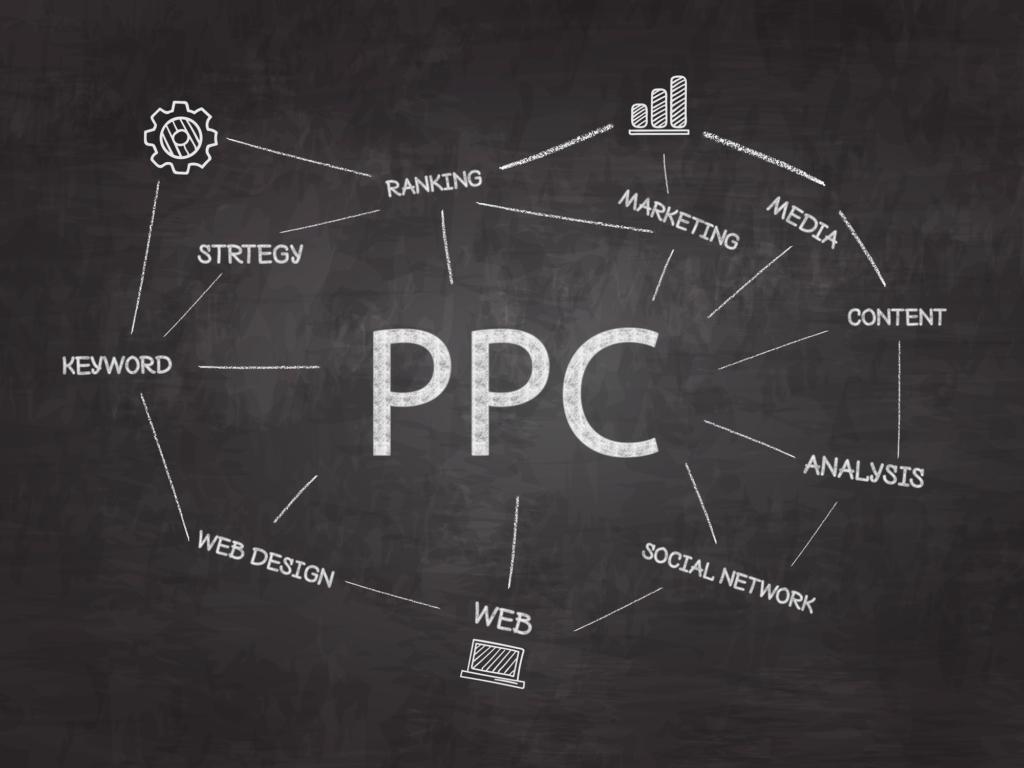
Factors Contributing to the Rise in Costs
While the ad expenditure is known to fluctuate, the data shared above clearly shows that Amazon’s PPC costs are on the rise. However, what is the driving force behind this?
The Big Players: Impact of Large Companies and Aggregators
The burgeoning presence of large corporations and aggregators in the marketplace has been a game-changer. These entities have the financial clout to invest in robust PPC campaigns, often sidelining smaller vendors who can’t match their Amazon PPC advertising costs.
For instance, these big players frequently opt for aggressive ‘brand defensive’ campaigns where they not only bid on their brand keywords but also on generic or competitor keywords. The aim is to dominate the ad space and, thereby, consumer attention. They can also afford more sophisticated Amazon management tools and dedicated teams, giving them a leg-up in real-time decision-making.
Moreover, their sheer scale allows them to work on razor-thin margins if needed, allowing them to outbid smaller sellers even if it means a higher ACoS or TACOS in the short term. Their strategies often have a ripple effect, forcing even medium-sized sellers to up their bids and, therefore, their Amazon PPC management cost just to stay competitive.
Demand and Supply Dynamics
Online shopping has become more than a convenience; it’s a lifestyle. This surge in e-commerce has intensified the demand for advertising slots. Conversely, the platform has limited ‘real estate’ for ads, creating a bottleneck that pushes prices up. Thus, since ad placements aren’t increasing as quickly as the need for them, the Amazon PPC cost nudges upward. It’s the classic economic principle of supply and demand at play.
Challenges for Small and Medium-Sized Sellers
Navigating the world of e-commerce is about more than just signing up, listing products, and watching the sales roll in. Especially for small and medium-sized sellers, the journey is often fraught with challenges that seem almost tailor-made to trip them up at every turn.
So, what challenges do up-and-coming brands face in the current market? Let’s explore.
Budget Crunch
In a marketplace teeming with giant retailers wielding colossal advertising budgets, small sellers often feel like minnows in a sea of sharks. With CPC rates having seen a year-on-year increase, the Amazon PPC advertising cost can quickly become a devouring pit, swallowing up limited resources needed elsewhere in the business.
Complexity and Time
Amazon PPC management cost isn’t just monetary; it’s also a matter of time and mental energy. Keyword research, bid management, and analytics tracking are no walk in the park. The more complex the advertising landscape becomes, the more time sellers divert their attention from other aspects of their business.
Fluctuating Metrics
We’ve all been there. One day, your campaigns bring in a comfortable ROI; the next day, a sudden surge in competition or algorithmic changes push your ACoS through the roof. These fluctuations can be nerve-wracking and make it difficult to plan long-term.
Inventory Balancing Act
Imagine ramping up your ads for a product only to find out you’ve run out of stock much sooner than expected. On the flip side, overestimating PPC effectiveness can lead to storage costs for unsold inventory, creating another financial drain.
Understanding the Balance Between PPC and Other Operational Costs
It’s tempting to think of PPC price as a solitary expense existing in a vacuum. However, that’s far from the truth. Every pound spent on ads is a pound that can’t be used for improving product quality, storage, shipping, or customer service. In fact, upon delving into the costs associated with Amazon PPC, it becomes evident that its financial implications extend across your entire business operations.
- Shipping: Opting for Amazon’s FBA service may alleviate some of your shipping concerns, but it’s not free. It’s an expense that needs to be factored in alongside your ad spend.
- Storage Fees: Holding too much inventory can incur long-term storage fees, particularly if your campaigns don’t perform as expected. On the other hand, understocking due to a high PPC Amazon cost can lead to stockouts, lost sales, and poor customer reviews.
- Seasonal Variations: Seasonal changes affect demand, ad spend, and storage fees. A poorly timed campaign during a low-demand season can result in elevated ad spend and storage fees for unsold inventory.
So, if you find yourself constantly juggling these considerations, you’re not alone. These aren’t isolated issues; they’re interconnected challenges that can have a domino effect on your business’s profitability.
Understanding this balance is the first step towards devising a roadmap that doesn’t leave you burning the candle at both ends. Remember this as we delve into actionable strategies in the later sections. Your concerns are valid, but they’re also surmountable.
How Much Does Amazon PPC Cost?
Below, we’ll unravel the intricacies of Amazon PPC costs and offer actionable advice on setting a realistic budget.
How to Predict Amazon PPC Advertising Costs?
The art of predicting ad spend involves multiple factors. You may have used an Amazon PPC cost calculator in the past, but remember, calculators can only take you so far. Real-world scenarios are often more dynamic. Here’s how to make an educated prediction:
- CPC: Check the average CPC for your chosen keywords. This will be the foundation of your budget.
- Volume of Keywords: The more keywords you bid on, the higher your expenditure. A focused keyword list may help manage outgoings.
- Bid Approach: Think carefully about which type of targeting you’ll choose, such as manual or automated bidding, as these will affect your expenses differently. For instance, the automated option often seems convenient but can sometimes lead to higher spending if not monitored.
- Historical Data: Past performance can guide your current budget. If you’ve run similar campaigns before, that data is a treasure trove of valuable insights.
How to Work Out CPC?
On the marketplace, you’re charged every time someone clicks your ad, known as CPC. To work out an average CPC, you divide the total amount spent on a campaign by the number of clicks it received. Keep in mind that this is an average. You might be bidding on multiple keywords, each with varying CPC.
The 2.5 Rule: One simple guideline that many seasoned sellers swear by is the 2.5 Rule. This states that your average CPC should not be more than 2.5 times your profit margin per unit. If you’re selling a product with a £10 profit margin, your average CPC should ideally not exceed £2.50.
What Should Your Daily Budget Be?
A major dilemma sellers grapple with is deciding the daily budget. Here’s a handy tip – aim for a daily budget representing around 15-20% of your monthly revenue goal. To break it down:
- Calculate the Monthly Budget: Start by identifying your revenue goal for the month. Multiply that by 15-20%, depending on your profit margins before ad expenses. This gives you your monthly PPC budget.
- Daily Budget: Divide the monthly budget by 30 or 31 days to arrive at a daily figure. For example, if your monthly budget is £3,000, your daily ad spend would be about £100.
- TACOS Metrics: This 15-20% spend should ideally translate into a similar percentage when you consider TACOS, which takes into account your ad spend as a proportion of your total revenue.
The aim isn’t just to understand ‘how much does PPC cost Amazon’ but also to intelligently allocate resources for the best returns. Yes, how to reduce Amazon PPC cost is an ongoing challenge, but with a carefully planned budget and a vigilant eye on performance metrics, it’s a challenge you’re more than capable of meeting.
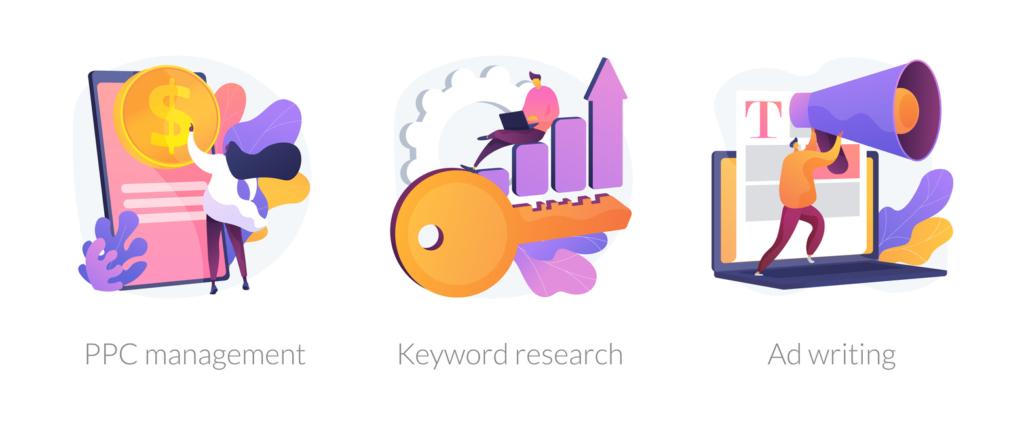
How to Reduce Your Amazon PPC Cost?
After understanding the intricacies of ad spend, the next logical step is to figure out how to keep those expenses in check. Don’t let the increasing average CPC figures discourage you. The real finesse in Amazon PPC management cost isn’t just about spending money to make money – it’s about optimising that spend for maximum returns. Let’s delve into the key tools in your toolkit for reducing your Amazon PPC advertising cost.
1. Bidding Strategies and Placements
In simplest terms, bidding techniques dictate how the algorithm will modify your base bid depending on various real-time factors, such as the likelihood of conversion. In addition, placements refer to where your ad will appear – top of the page, within search results, or on product detail pages. The interplay between your bidding plan and placement can dramatically impact your Amazon PPC advertising cost and, ultimately, your profitability.
Dynamic Bidding (Down Only)
This approach allows the platform to reduce your bids in real-time if the click is deemed less likely to convert. For newcomers or those who have faced conversion challenges, this is an excellent way to reduce Amazon PPC costs without compromising viability.
Dynamic Bidding (Up and Down)
Here, the marketplace will either increase your bid (by up to 100%) or decrease it based on the possibility of purchase. It’s a helpful tactic for those who can afford to pay extra for competitive keywords, assuming those keywords generate sales. By leveraging this method, you are essentially agreeing to pay more, but only when the odds are in your favour, potentially lowering your Amazon PPC management cost in the long run.
Fixed Bids
This gives you complete control over how much you’re willing to pay for a click, irrespective of the conversion odds. If you’ve conducted in-depth research and have a tight grip on the exact value of each keyword, this strategy can be beneficial.
Rule-Based Bidding
If you’re a seasoned seller who knows the ins and outs of your performance metrics, you’ll appreciate rule-based bidding. Here, you can define custom rules to adjust bids automatically based on your set performance parameters. For example, if your ACoS is below a certain percentage, you could automatically increase your bid, allowing you to chase more profitable opportunities.
Placements
Understanding your ideal placement can also significantly impact your ad expenditure. For instance, a top-of-search position generally has higher visibility and, therefore, a higher price but often leads to better conversion rates. Conversely, placements on product pages may be priced less but are generally less effective regarding conversions. By balancing where your ads appear in accordance with your product’s lifecycle and goals, you can tweak your overall Amazon PPC cost.
Understanding these techniques and how they relate to placements can be a game-changer in managing your ad expenditure. It’s not just about cutting expenses but optimising them. So, while you’ll still need an Amazon PPC cost calculator for the maths, the real magic happens when you align your strategies with your objectives.
2. Keyword Selection, Ad Placements, and Budget Management
The battle for the top spots in search results isn’t for the faint-hearted, but with a little cunning and planning, you can outmanoeuvre the competition. Let’s look at the nitty-gritty details of keyword selection, ad placements, and budget management, shall we?
Keyword Selection for New Products With Few or No Reviews
When you’re a newcomer or your product has few to no reviews, you’ll want to steer clear of highly competitive keywords. For instance, if you’re selling three-wick vanilla candles, you could dive into the ocean of vendors using ‘candle’ as their primary keyword. However, it’s not a clever move.
You’ll want to go hyper-specific by focusing on sub-niche or long-tail keywords like ‘luxury candles,’ ‘three-wick candles,’ ‘vanilla candles,’ or ‘gift box candles’. Not only does this help you find a more targeted audience, but it also significantly reduces how much your Amazon PPC cost will be.

Preference for Campaigns With Stable Sales
If you’re seeing consistent sales for particular keywords, double down on those. Those terms not only help with sales but also boost your organic ranking. Essentially, these are your ‘golden geese’ that serve you best in the short and long term.
Ad Placements: The Gradual Strategy
Start with basic settings for ad placements. Keywords have both an organic and advertising ranking position. Over time, terms with good performance metrics will naturally ascend to better positions, possibly even reducing your Amazon PPC advertising cost.
You’ll want to test ad placement increases in two situations:
- Specific Keyword Placement: If you find that certain search terms only perform well in particular placements, isolate those. Create a new campaign and set up a higher bid for that specific, better-performing placement.
- Boosting Organic Ranking: For phrases that have excellent conversion rates and you want to push higher in organic search, take the plunge and set up a new campaign with higher bids, particularly for top-of-search placements.
Budget Management: Keep an Eye on TACOS
Budget management might seem simple, but it’s vital. Your budget should not exceed 10-20% of your margin, depending on the competitiveness of your niche. Simply put, your TACOS should stay within that range.
To optimise your budget, follow the below steps:
- Cut the Slack: Begin by axing low-converting keywords or search terms with an ACoS higher than 25%. They drain your budget and offer little in return.
- Priority to Stable Campaigns: If you’re on a tight budget and can’t fund all your campaigns adequately, always give preference to campaigns with stable sales for particular search terms. These are your best bets for maintaining a healthy ACoS while boosting your organic rankings.
3. Targeting the Right Products and Keywords to Lower Your Amazon PPC Cost
It’s tempting to go full steam ahead and target the most popular products and keywords, hoping for a windfall. However, savvy sellers know a more thoughtful approach can improve sales and reduce ad spend.
The Power of Related and Relevant Products and Keywords
When talking about targeting related products and search terms, it’s crucial to stress the importance of relevancy. Sure, you might want to expand your keyword reach, but you don’t want to lose sight of what the consumer is actually searching for. For instance, if a buyer is hunting for a yellow children’s raincoat, they wouldn’t appreciate seeing ads for jumpers or summer clothes popping up. This would lead to low click-through rates and waste your advertising budget.
Let’s consider another example to illustrate the point. Suppose you sell ergonomic office chairs. While it’s tempting to go broad and target terms like ‘office furniture’ or even ‘home office’, you’ll likely have better success and lower PPC expenses by focusing on highly relevant, specific terms. Target terms like ‘best ergonomic chairs’, ‘adjustable office chairs’, or ‘back-support chairs’.
In this way, you’re not just securing traffic; you’re capturing the right traffic – people who are genuinely interested in products like yours. Irrelevant search terms can inflate your Amazon PPC advertising cost without delivering the conversions to justify it. So, the more closely your words align with your product, the higher your chances of converting clicks into sales, thereby reducing your overall PPC cost on Amazon.
Advertising the Right Products
Knowing which of your products to advertise is crucial, as some will perform better than others. For example, a new product with no reviews and a poor description is unlikely to convert many shoppers. Thus, where possible, advertise optimised listings and products with customer reviews, as these will perform significantly better in campaigns. In fact, here’s why: 41% of consumers on Amazon read product reviews before making a purchase. That’s almost half of your potential customer base! Moreover, data shows that after price and shipping, product reviews are the decisive factor for a whopping 57% of shoppers.
So, if you want to be wise about your ad management, place your bets on your best-selling products with solid reviews.
Exploring Less Competitive Niches
Sometimes, the path of least resistance is the most rewarding, and this holds true for Amazon ads. Tapping into less competitive niches can be an ingenious way to reduce your PPC costs. Remember, less competition usually means a lower CPC, making it a win-win situation for smaller sellers who can provide quality products in these niches.
4. Automation and Optimisation Tools: The High-Tech Route to Lower Ad Spend
When it comes to shaving those extra pounds off your advertising expenses, modern technology is your friend. It’s not just about setting up your campaign and hoping for the best anymore. The marketplace is too competitive and intricate for that. Therefore, with automated tools like Sellics and Helium 10, you can take control of your advertising destiny like never before. These platforms offer an all-in-one dashboard with features such as automated bidding, keyword tracking, performance analytics, and even AI-powered recommendations to supercharge your ads.
So, what’s in it for you? Real-time adjustments are a key highlight. Promotion on Amazon is dynamic and ever-changing. By using automated tools, you can swiftly react to market trends without making constant manual adjustments. This real-time action ensures you’re not throwing your hard-earned money at ineffective keywords or overbidding when unnecessary.
Furthermore, let’s not forget the time-saving aspect. Automation takes care of the repetitive tasks, leaving you free to focus on more strategic elements, like pinpointing less competitive niches for your products. In a way, it’s like having an extra pair of hands – virtual ones, of course – that are ever-ready to optimise your campaign at a moment’s notice.
Plus, speaking of optimisation, Helium 10 even offers an Amazon PPC cost calculator. This tool can help you work out the nitty-gritty of your campaign finances, allowing you to better predict how much your advertising expenses might be. This is invaluable data, especially when trying to stick to a budget.
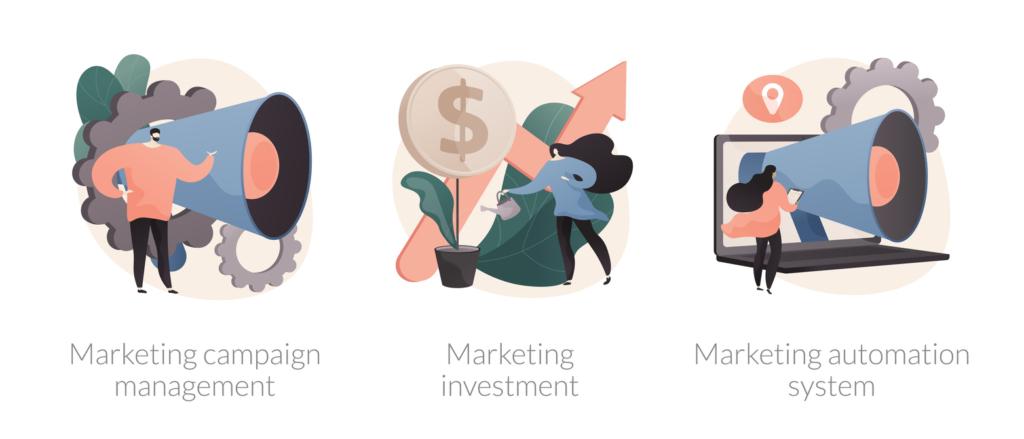
NUOPTIMA Case Study: How an Apparel Brand Scaled Sales and Halved ACoS
When it comes to slashing ad spend while boosting revenue, the proof is often in the pudding – or, in this case, an impressive case study by NUOPTIMA. Due to confidentiality reasons, the name of the apparel brand in question is under wraps, but the transformational results are not.
The Challenge
The brand started with a decent $500 in daily sales but was bogged down by a high ACoS. The mission was clear: they wanted to rev up the revenue whilst trimming down the ACoS.
The Strategy
NUOPTIMA came on board and implemented a multi-pronged approach. Firstly, we took a deep dive into back-end search terms. By harvesting hundreds of high-performing search terms and product targets, we expanded the brand’s manual targeting mix. This was a masterstroke; not only did it make the brand more discoverable on the marketplace, but it also allowed us to bid more efficiently, effectively reducing the Amazon PPC advertising cost.
We also recognised the untapped potential of Sponsored Brands. Introducing the apparel brand to this feature resulted in one campaign alone generating a staggering $5,000 in sales, a 7x Return on Ad Spend (ROAS), and a significantly reduced ACoS of just 14%.
Budget Optimisation
NUOPTIMA’s team went beyond just keyword and product target optimisation. They custom-tailored budgets based on individual product objectives and introduced dozens of negative keywords and product targets to prevent wasteful ad spending. This is a crucial element in management expenses, as it ensures you’re not burning through your budget on ineffective advertising.
The Outcome
The end result was nothing short of remarkable. The brand’s daily sales jumped from $500 to an impressive $2,000. But what caught everyone’s eye was the halving of the ACoS. That’s right; they managed to cut their Amazon PPC cost in half while quadrupling their revenue.
The Takeaway
This NUOPTIMA case study is a testament to how a well-executed, multi-faceted PPC action plan can elevate sales and substantially lower ad spend. So, as you ponder how to make your campaigns more effective, remember with the right tools and strategies, the sky’s the limit.
Conclusion: The Imperative of Mastering Amazon PPC Cost
Navigating the complexities of promotional expenditure is far more than a nice-to-have skill; it’s imperative for sellers who want to make their mark. If you’re scaling up your revenue while keeping Amazon PPC management costs at bay, then understanding the nitty-gritty of PPC is essential. Not only will it help you bid smarter, but it also allows you to strategically position your products for better organic ranking and overall visibility.
So, stay well-informed, be adaptable, and never underestimate the impact of continually optimising your ad approach. In a landscape as dynamic as Amazon, standing still is moving backwards. You have an arsenal of resources, methods, and tools at your fingertips—make the most of them for unparalleled success.
Ready for a transformation like our apparel brand case study? Don’t navigate these waters alone. Book a call with NUOPTIMA today, and let us guide you through the intricacies of minimising Amazon PPC costs while maximising revenue.
FAQ
The general rule of thumb is to allocate around 15-20% of your revenue goal as a monthly PPC budget. It’s crucial, however, to divide this over 30 or 31 days and adapt based on real-time performance metrics.
The PPC Amazon cost is determined by multiple variables, including your bidding strategy, competition, and the relevance of your keywords. While there’s no one-size-fits-all answer, leveraging systems like dynamic bidding and targeting specific, long-tail keywords can often result in a more cost-effective PPC campaign.
Absolutely, when managed correctly, Amazon ads can be a powerful tool for increasing both your product’s visibility and your overall revenue. Just be sure you’re continually monitoring and adapting your strategy to ensure you’re getting the most bang for your buck – or quid, in this case!
References
https://www.sellerapp.com/blog/amazon-seller-statistics/
https://www.junglescout.com/blog/amazon-ppc-costs/
https://www.junglescout.com/blog/how-much-do-amazon-ads-cost/
https://www.marketplacepulse.com/articles/amazon-ads-are-getting-more-expensive
